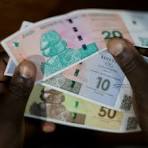In a recent interview, Zimbabwe’s Deputy Minister of Finance, David Kudakwashe Mnangagwa made headlines by declaring that the Zig currency would be the final currency to be introduced in the nation’s ongoing efforts to stabilise its economy.
This statement not only highlights the complexities of Zimbabwe’s monetary policy but also reflects the broader challenges facing a nation that has grappled with hyperinflation and currency devaluation for over a decade.
Zimbabwe’s economic troubles began in the late 1990s, culminating in hyperinflation that peaked in 2008, rendering the Zimbabwean dollar virtually worthless.
As a response, the government adopted a multi-currency system, allowing the use of foreign currencies like the US dollar and the South African rand for daily transactions.
The introduction of the Zig currency marks a remarkable step for Zimbabwe, aiming to provide a stable and reliable financial medium for its citizens.
The Deputy Minister emphasised that this initiative is part of a wider strategy to revitalise the economy, attract investment, and restore public confidence in local financial instruments.
“The Zig represents a commitment to a new era,” the Deputy Minister stated. “While we understand the skepticism due to past failures, we have learned valuable lessons from our history, and we are determined to ensure that this currency serves the needs of the Zimbabwean people.”
As the nation prepares for its rollout, all eyes will be on the government’s implementation strategies and whether they can effectively restore confidence in the Zimbabwean economy. Only time will tell if the Zig currency will indeed be the last currency the nation adopts, or if it will pave the way for a renewed era of economic prosperity for Zimbabwe.
SOURCE : NEWSREPORTZIM.COM










